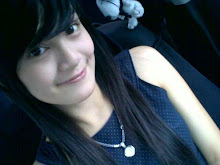 Internationally celebrated as the man who essentially picked up where Chano Pozo left off, Candido Camero was among the most ubiquitous of the Cuban and Caribbean percussionists who enlivened and enriched the musical landscape of North America during the second half of the 20th century. Among the first to popularize the use of multiple conga drums and one of the inadvertent instigators of the bongo craze of the 1950s, he outlived most of his contemporaries and was still performing with extraordinary passion and precision well after attaining the status of an octogenarian.
Internationally celebrated as the man who essentially picked up where Chano Pozo left off, Candido Camero was among the most ubiquitous of the Cuban and Caribbean percussionists who enlivened and enriched the musical landscape of North America during the second half of the 20th century. Among the first to popularize the use of multiple conga drums and one of the inadvertent instigators of the bongo craze of the 1950s, he outlived most of his contemporaries and was still performing with extraordinary passion and precision well after attaining the status of an octogenarian.
Candido de Guerra Camero was born in the El Cerro barrio of San Antonio de los Baños in Havana, Cuba, on April 22, 1921. As a young boy he played the string bass. After operating a tres guitar with Conjunto Gloria Habanera at the age of 14, he began to concentrate on the bongos, and had soon graduated to the conga. In addition to the Pan African combination of Yoruba, Portuguese, and Spanish folk influences, Candido named U.S. jazz drummers Max Roach and Kenny Clarke as primary inspirations. He recorded with various Cuban bandleaders including Machito, worked for six years in the house band at radio station CMQ in Havana, and performed at the Tropicana club there as a member of Armando Romeu's orquesta from 1947 to 1952.
The North American chapter of his career began in October of 1952 and was inaugurated with a six-week engagement at the Clover Club in Miami, followed by a move to New York suggested by his new friend, trumpeter Dizzy Gillespie, who personally took him to the Downbeat Club to sit in with pianist Billy Taylor. During 1953 and 1954 he recorded with Taylor's trio as well as with Erroll Garner, assisted Gillespie in the realization of "Manteca Suite" (the first of many recorded collaborations with Diz), and toured with the Stan Kenton Orchestra. He then formed his own group (including saxophonist Al Cohn); made his first recordings as a leader in 1956; and toured extensively through Venezuela, the Dominican Republic, Puerto Rico, Miami, and New York.
During the late '50s, throughout the '60s, and well into the '70s, Candido became the most active Latin American percussionist in both jazz and pop music, appearing on television to an unusual extent and recording with saxophonists Charlie Parker, Gene Ammons, Stan Getz, Phil Woods, Sonny Rollins, Illinois Jacquet, and Coleman Hawkins; guitarists Kenny Burrell and Wes Montgomery; pianists George Shearing and Marian McPartland; and vocalists Dinah Washington, Lena Horne, Patti Page, Tony Bennett, Charo, and Antonio Carlos Jobim. He appeared with bandleaders Tommy Dorsey, Duke Ellington, Woody Herman, Lionel Hampton, Doc Severinsen, Chico O'Farrill, Lalo Schifrin; drummer/bandleaders Art Blakey, Elvin Jones, Mongo Santamaria, and Tito Puente; and fellow conga masters Giovanni Hidalgo and Carlos "Patato" Valdes.
Over several decades he combined his highly developed Afro-Cuban artistry with disco, funk, and practically anything else that was in the air. With more than 16 albums to his credit (including a spectacular reunion with Machito's star vocalist Graciela Perez in 2004), a triumphant Candido sailed through the first years of the 21st century as resilient, creative, and full of life as ever. His signature line of premium drums come in three distinct models: the Quinto, the Conga, and the resonant Tumbadora. AMG.
listen here
Sunday, June 5, 2011
Candido - In Indigo 1958
Popular Posts
-
When you think of the Doors , "guitar" isn't the first thing that usually comes to mind ( Jim Morrison 's manic persona an...
-
The only album by the Steve Baron Quartet was a fitfully interesting but uneven effort, jumping between Baroque folk-rock, moody early si...
-
Kathy McCord - Kathy McCord 1970 Kathy McCord released a lone self-titled LP in 1970, the first release from Creed Taylor ’s CTI Records, ...
-
David Lannan was a street singer from San Francisco, CA. 1970's Street Singer was recorded live outside The F.B.I. Stock Exchange City H...
-
The Small Faces were the best English band never to hit it big in America. On this side of the Atlantic, all anybody remembers them for i...
-
A wild, freewheeling, and ultimately successful attempt to merge psychedelia with jazz-rock, Soft Machine 's debut ranges between loving...
-
Redbone was a Los Angeles-based group led by Native American Pat and Lolly Vegas . They hit paydirt in 1974 with the million-seller "...
-
Although it was a disappointing seller and signaled the start of Donovan 's commercial decline, Open Road could have been a new beginn...
-
Ahmed Abdul-Malik was one of the first musicians to integrate non-Western musical elements into jazz. In addition to being a hard bop bas...
-
Kingfish is a San Francisco-influenced band which originally featured the Grateful Dead's Bob Weir , singer/harpist Matthew Kelly , bas...











0 comments:
Post a Comment